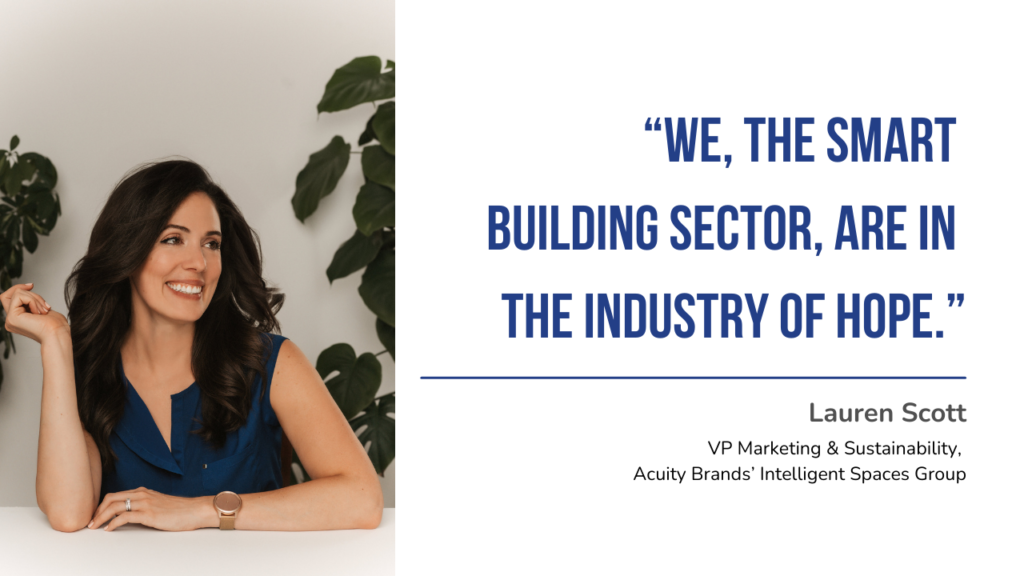The following is an excerpt from the “The Future of Energy Management: ESG, Decarbonization, and Electrification” panel at the 2024 AHR Expo.

I have been working in marketing and communications for the past 16 years, with more than 10 of those years working in the cleantech space. More specifically, I have worked in the renewable energy and smart building sectors. I also spent the last 6 years on the board of directors for the Sierra Club Canada Foundation, the Canadian arm of one of the oldest and largest environmental groups in the US.
And I mention this, because I am regularly asked: as someone who cares so deeply about the environment, how did I end up in the smart building space?
My response to this is tied to the very reason I ended up in marketing in the first place. Admittedly, part of choosing this path is due to the fact that, unlike many of my colleagues and peers in this industry, I just squeaked past my physics and chemistry courses. The deeper reason, however, is that I loved how marketing combined the two elements of business and psychology. And I believe that our industry perfectly demonstrates a similar balance: yes, there is this incredible business opportunity on one side, but there is also a lot of psychology when it comes to decarbonizing the built space. It can feel very challenging, and a lot of people can find this overwhelming. Which is why I was so intrigued when I recently came across a theory called The Hope Theory.
And it made me realize that we, in the smart building sector, really are in the industry of hope.
The Hope Theory, developed by positive psychologist Charles Snyder, is based on the idea that three key elements are required for hope when facing a challenging situation like trying to figure out how to decarbonize the build space.
First, you have to have goals. Those goals tend to be set either by our customers on their Net-Zero journeys or they could be regulatory goals.
Second, you have to have pathways. I would argue that every single supplier out on the trade show floor (note of context: this was during a panel conversation at AHR Expo 2024) is probably trying to show those pathways / how you’re going to get there. For my company, our pathways involve the software, sensors, and controls needed to make buildings smarter, safer and greener.
And then the last piece of hope is agency. And so that’s where our broader community of system integrators and distributors really come in. Agency is in our community’s informing and guiding our customers about how they can have a direct impact on decarbonization.
Our industry’s connection to goals, pathways and agency showcase how we are beautifully positioned to tie together both the business and psychology of decarbonizing the built space. We are truly in the industry of hope, and that’s how I (as someone passionate about environmental impact) ended up and love it here.


